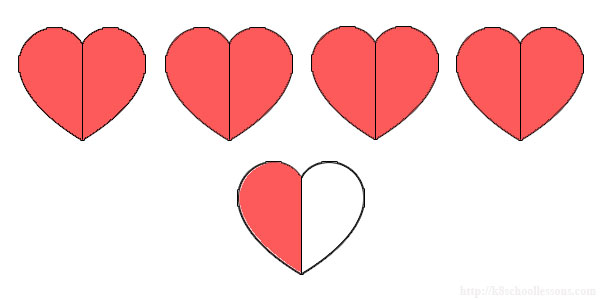1/3
1/2 = ?
Name the point on the number line as a fraction
3/4
True or false: This triangle is split into fourths.
False!
Fractions must have equal parts.
Draw a model to represent the fraction 1/6

8/14
1/4 = ?
Name the point on the number line as a fraction
8/8
True or false: 1/8 is a unit fraction.
True!
A unit fraction is a fraction whose numerator (top number) is 1, or a fraction that represents one equal part of the whole.
Draw a model to represent the fraction 3/8

9/2
2/3 = ?
Name the point on the number line as a fraction
6/3
True or false: the numerator (top number) of a fraction represents the total number of equal parts.
False!
The numerator represents the number of equal parts that are shaded or being counted. The denominator (bottom number) represents the total number of equal parts.
Draw a model to represent the fraction 9/5

13/4
6/10 = ?
Name the point on the number line as a fraction
7/6
True or false: 1/2 is always greater than 1/4.
False!
1/2 is only greater than 1/4 when the wholes are the same size. If the wholes are different sizes, they cannot be compared.

Draw and label a number line split into fourths. Label 1/2 on the number line.

3/8
6/8 = ?
Name the point on the number line as a fraction
7/2
True or false: The more parts you need to make a whole, the smaller the parts are.
True!

Draw and label a number line split into thirds. Label 2/3 on the number line.